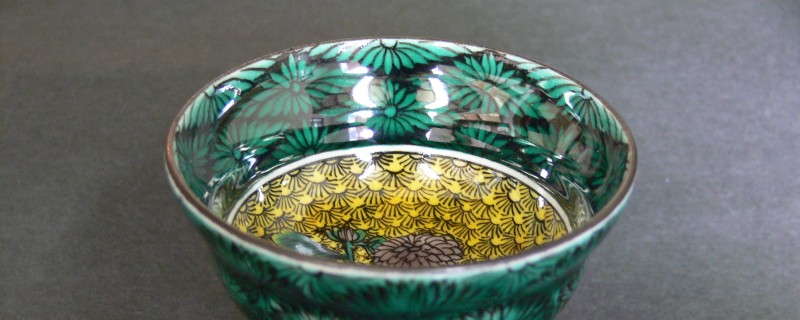

In 1628, Maeda Toshitsune, the third generation of the Maeda family, had a potter from Etchu Seto make pottery in Kaga Suisaka. It preceded Old Kutani. It is said to be one of the roots of Kutani. (Suisaka)
In 1655, Toshiharu Maeda, feudal lord of the Daishoji domain, ordered Saijiro Goto to make pottery from ceramic stones discovered in Kutani, Yamanaka-cho, Enuma-gun. (Old Kutani)
In the Genroku era, the Kaga clan closed down its kilns due to the financial difficulties of the Daishoji clan and the fact that the Kutani area was deep in the mountains and unsuitable for transportation.
In 1866, the Kaga clan invited a potter from Kyoto, Aoki Mokubei, to revive Kutani ware, and opened a kiln at Utatsuyama in Kanazawa with Matsuda Heishiro and others as the potter. The majority of the products made at the Kasugayama kiln in Kanazawa were daily necessities such as bowls and plates. (Mokubei)
In 1811, Sadakichi Honda and others who moved from the Kasugayama kiln to Wakasugi in Komatsu City took the lead in starting the Wakasugi kiln. The kiln became large in scale because of the availability of high-quality pottery materials in Hanasaka, Komatsu City, a neighboring village.
In 1815, the Kaga Clan placed the Wakasugi Kiln under the control of the Gun Magistrate, and protected and supported it as the Wakasugi Tokijo. The Wakasugi kiln continued to operate until the beginning of the Meiji period.
In 1828, Denemon Toyoda of Daishoji, Kaga City, opened the Yoshidaya Kiln in Kutani, Enuma County, in addition to the Old Kutani Kiln. Due to the lack of convenient transportation, the kiln was moved to Yamashiro in 1918, and full-scale operations began. (Yoshidaya)
In 1840, after the closing of the Yoshidaya kiln, Miyamotoya Uemon, who had been the manager of the same family, rebuilt the kiln, and Iida Hachiroemon became the main painter and started the Miyamoto kiln. (Iidaya)
In 1865, Sando Bunjiro started a kiln in Yamashiro, Kaga City, with the support of the Daishoji clan. Invited Nagaku Waruzen, a master craftsman in Kyoto, to start the Nagaku Kiln. Also known as Kinrante. (Eiraku)
Shouza Kutani, who had worked at Miyamoto Kiln and Ono Kiln, completed the technique called "Shouza style" in Terai. (Shouza)